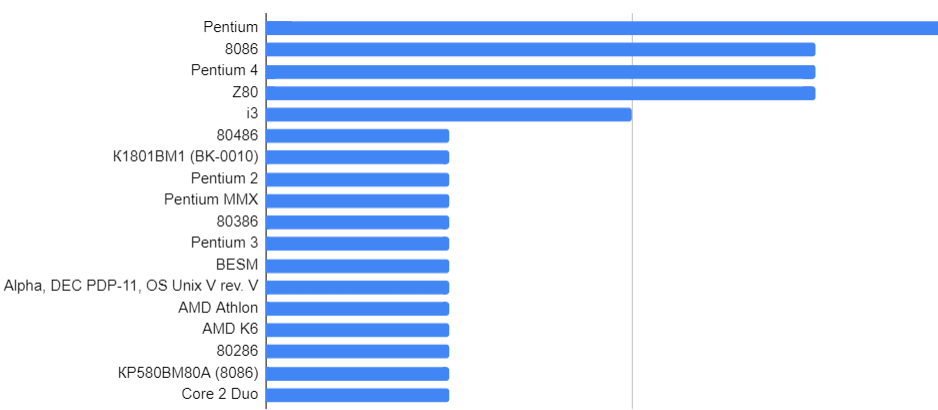This post opens a series of publications dedicated to the upcoming 25th anniversary of LEDAS.
In our era, which in many respects is not much different from the era of two thousand years ago, it is still important to periodically ask the question of who we are.
To get at least a partial answer to this question, which worries not only philosophers who occasionally think about it, but also always active recruiters, we conducted a survey of company employees.
And before we get to the strings, let's find out at what age and in what language the developers of CAD components and solvers begin programming.
It turns out that most people start doing something interesting at the age of 11-15, but there are quite a few developers who started programming seriously after the age of 17.

At a young age, their own parents or the parents of their classmates often introduce them to programming – some were brought to the office, where they had the only opportunity to touch computers. School teachers also often contributed. They allowed students to stay at the computer lab after classes and even asked them to implement something useful for the school: from testing systems for elementary school students to porting a computer system for individual learning from one architecture to another.
There were also surprising coincidences. For example, one of our future employees first came across a book on programming, which motivated him to look for other similar ones in the school library, and then the class teacher in a rural school showed him a computer with Linux OS (Mandriva distribution).
And sometimes an irresistible interest in computer games pushes one towards programming. For example, one of our future employees loved playing the computer game “Stalker” so much that he wanted to make a “mod” for it, so he studied the Lua programming language
A lot of interesting stories were shared, but the contribution of school teachers definitely mattered in significant number of cases. We can say that school lessons for many of us influenced the answer to the question about our first programming language.

The leaders are Pascal and BASIC, which is quite natural. Despite the fact that there are ardent opponents of both of these languages, with a wide variety of arguments, the experiment in which we participated in our early years showed that, at least at the initial stage of immersion in the magical world of programming, these languages are quite acceptable.
We also wanted to know which processor and operating system LEDAS employees first encountered. Here it is interesting to look at both the exotic and the leading positions, which indirectly indicate the age range of our team.
Information about processors is a little more difficult to visualize, since not everyone remembers the details. For example, when asked about the processor they answered “Pentium”. Therefore, in the diagram below, the first line is deliberately cut off due to limited representativeness:

With the first operating system, everything turned out to be simpler: in the third line there is “Windows” without indicating the version, but this could not affect the leadership of Windows XP:

And now it’s time to move from soulless hardware to music, which for some of us is the core of the meaningful essence, while for others it is not the most significant part of life.
LEDAS employees dance and swim, develop training courses and write books, ski, climb rocks, play curling and intellectual games, etc. – and all this is very important. But this part of the post is only about the musical instruments played by CAD developers:

The leadership of the guitar is expected, but who imagined that Domra would get here?
Many experienced teachers know that any exam or survey should not only evaluate the current state of affairs, but also help gain new knowledge. When looking at the above diagram, some people asked how domra differs from dombra. So below is a short answer to the question:

Intuition didn't fail: in both cases there are strings, but the dombra has two, while the domra has three or even four, and the dombra is larger.
In subsequent posts, we will provide answers to other questions that you have long wanted to ask:
- Where did the best programmers study and what technical literature do they recommend?
- What books do LEDAS employees read and what movies do they watch?
- What was the first serious program they wrote?
- What sport activities and computer games do they like?
And something else…